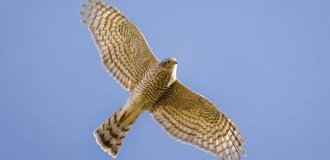A bird for which a simple mosquito bite can be deadly (9 photos)
For Hawaiian aiwi birds, every mosquito bite can be last. How did mosquitoes become the worst enemies of these birds? 
Ayivy, or the Hawaiian flower girl ivi, is a small elegant bird from the finch family. Their calling card is a thin curved beak and bright red feathers accentuated by contrasting black tail plumage and wings. Evies are considered one of the three most common bird species in Hawaii. But this title does not prevent the bird from being one more of the most vulnerable. The Ayivs have existed for too long in a closed system of islands, too narrowly they specialized for hundreds of years evolution. Therefore, the species reacts sharply to any interference from outside. 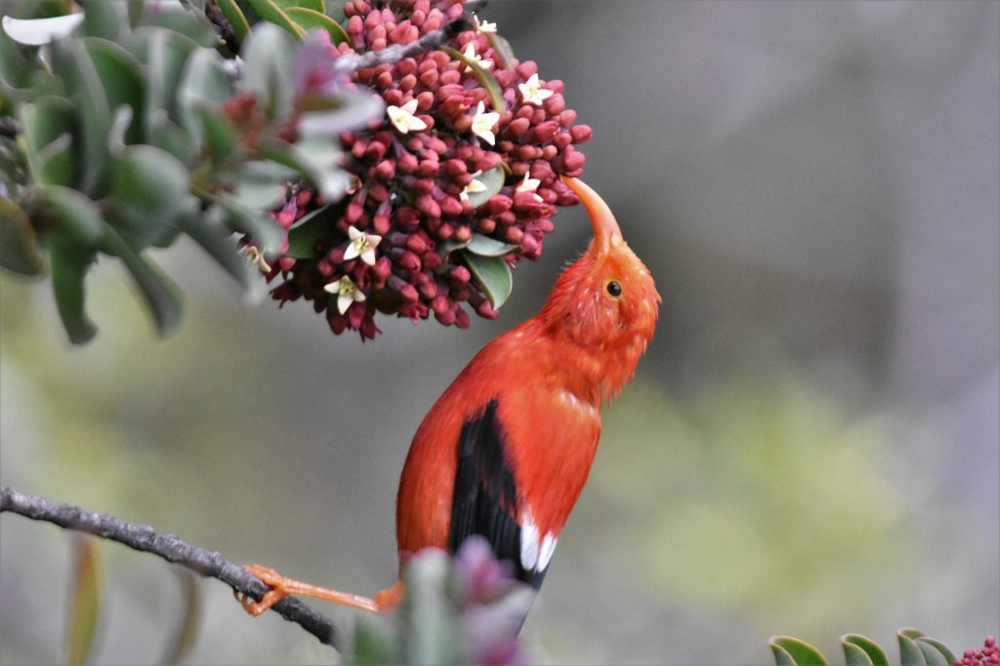
So, according to scientists, the current range of iwi is only 10%(!) of the area that once historically belonged to them. Today, birds can be found on 5 of the 8 main islands of the Hawaiian archipelago. About 90% of the entire population of aiwi is concentrated in two Islands - Hawaii and Maui. The rest of the handful live to Molokai, Oahu and Kauai. The reasons for this plight several at once. First, a banal violation of the natural habitat. People intervened in the fragile ecosystem of the islands, cut down vital the forest necessary for iwi and took away the original habitats under Agriculture. 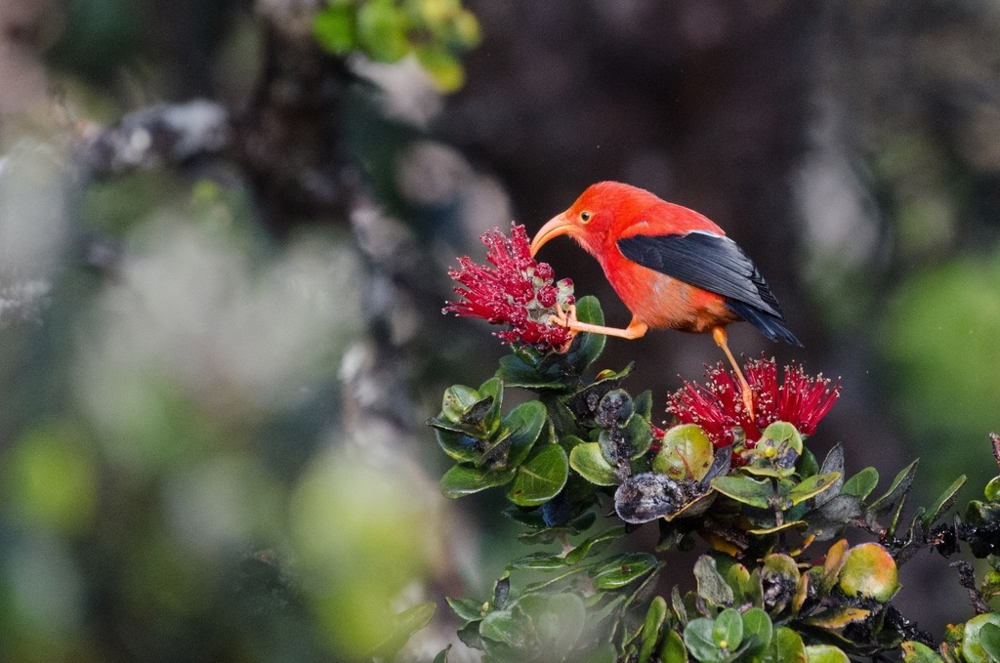
Today, almost the entire range of iwi is protected by law, but this does not bring great results in restoring the population.
The second reason follows from the first: human intervention leads to the death of habitual types of vegetation. And the birds do not need other plants! The crescent-shaped beak of these birds is designed to feed on the nectar of flowers with the same curved corolla. Evies can also catch insects, but this is more of a dessert than a main meal.
Previously, the main supplier of food for iwi were plants from the Hawaiian lobeloid group. With the advent of people, they disappeared. Iwi did not despair and for the last hundred years they have been feeding on flowers of the metrosideros genus, or ohia in Hawaiian. But it's not all smooth sailing for them either. Since 2010s in Hawaii, a fungal disease of plants is rampant. Infection mows down entire ohia plantations in just a matter of days. Well, what the fungus did not destroy, the imported ones eat up to the island of pigs and goats. 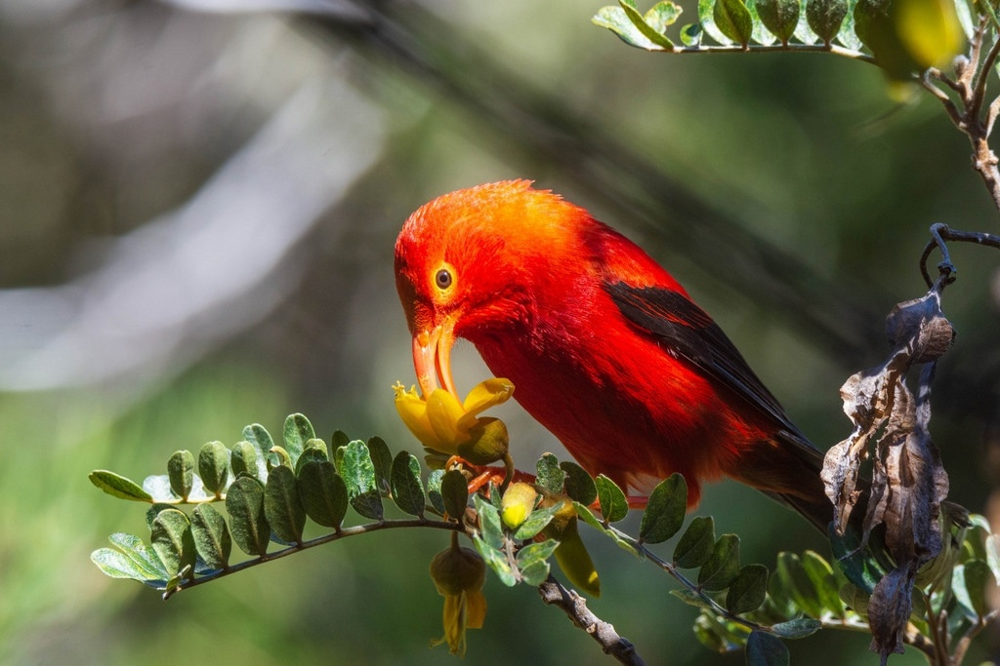
The third reason lies in predators and parasites atypical for the island. With cats dogs and mongooses understand everything: naive island birds not used to being hunted by such strange beasts. But all this toothy-fanged lads and out of the blue is not good for one comrade, that for some hundred years in fluff and feathers defeated the iwi population. Who do we have so formidable? Believe it or not, there is a whole gang operating here! The simplest parasite - Plasmodium sang with mosquitoes! But how did they do it? 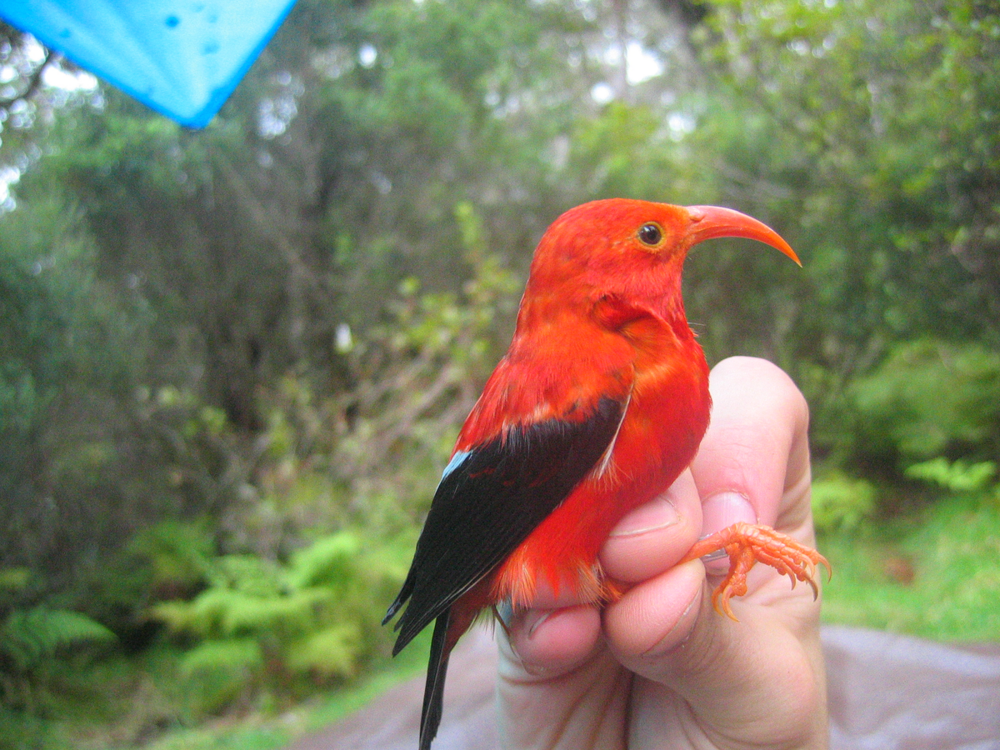
The first stage of the occupation was hitting the Hawaiian mosquito islands. Insects themselves do not represent no serious threat to local birds. The trouble came with the import of birds infected with plasmodia, the causative agents of avian malaria. The fact is that Plasmodium cannot be transmitted from a bird. to the bird directly, like viruses or bacteria, they must need an intermediary. And one of the best carriers of Plasmodium mosquitoes count! The cards met: the bloodsuckers bit the infected birds, became carriers of malaria and began to spread this infection all over the islands. 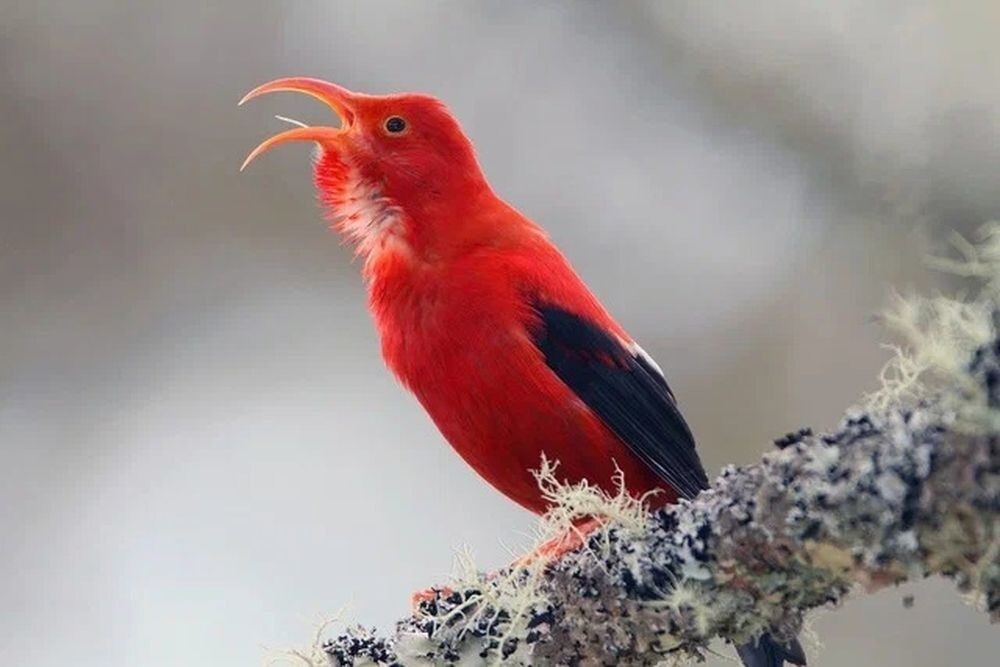
For Hawaiian birds, avian malaria infection deadly because their immune system does not recognize pathogens and cannot fight them. According to scientists, aiwie and other island species have diverged from the mainland population of birds about 5 thousand years ago. All this time the birds on the mainland lived in close contact with malarial plasmodia, evolved together and learned endure outbreaks of this disease without significant losses. But the islanders faced malaria for the first time!
This alignment forced the birds to leave their homes. If earlier iwi met at an altitude of 300 meters, today they cannot be found below 1300! The higher, the colder and less mosquitoes. Indeed, flowering plants frosts are not friendly. Because the birds have to make more effort, to feed themselves and their offspring.
<img src="https://cn22.nevsedoma.com.ua/p/26/2660/143_files/b307e9eb8e93148928e9







